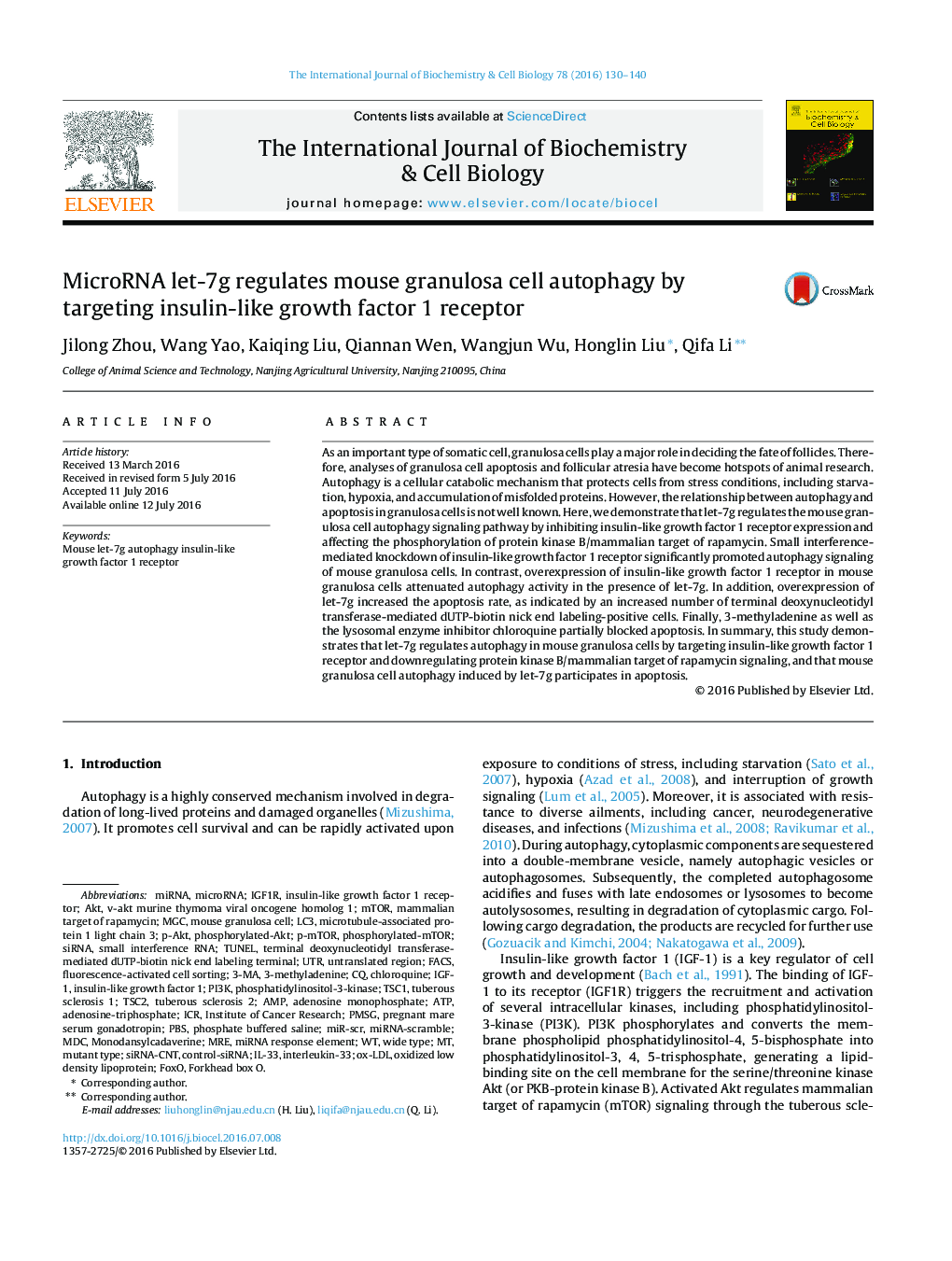| Article ID | Journal | Published Year | Pages | File Type |
|---|---|---|---|---|
| 1983301 | The International Journal of Biochemistry & Cell Biology | 2016 | 11 Pages |
As an important type of somatic cell, granulosa cells play a major role in deciding the fate of follicles. Therefore, analyses of granulosa cell apoptosis and follicular atresia have become hotspots of animal research. Autophagy is a cellular catabolic mechanism that protects cells from stress conditions, including starvation, hypoxia, and accumulation of misfolded proteins. However, the relationship between autophagy and apoptosis in granulosa cells is not well known. Here, we demonstrate that let-7g regulates the mouse granulosa cell autophagy signaling pathway by inhibiting insulin-like growth factor 1 receptor expression and affecting the phosphorylation of protein kinase B/mammalian target of rapamycin. Small interference-mediated knockdown of insulin-like growth factor 1 receptor significantly promoted autophagy signaling of mouse granulosa cells. In contrast, overexpression of insulin-like growth factor 1 receptor in mouse granulosa cells attenuated autophagy activity in the presence of let-7g. In addition, overexpression of let-7g increased the apoptosis rate, as indicated by an increased number of terminal deoxynucleotidyl transferase-mediated dUTP-biotin nick end labeling-positive cells. Finally, 3-methyladenine as well as the lysosomal enzyme inhibitor chloroquine partially blocked apoptosis. In summary, this study demonstrates that let-7g regulates autophagy in mouse granulosa cells by targeting insulin-like growth factor 1 receptor and downregulating protein kinase B/mammalian target of rapamycin signaling, and that mouse granulosa cell autophagy induced by let-7g participates in apoptosis.
